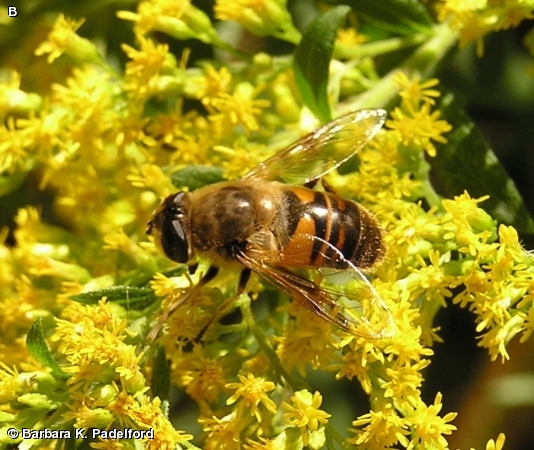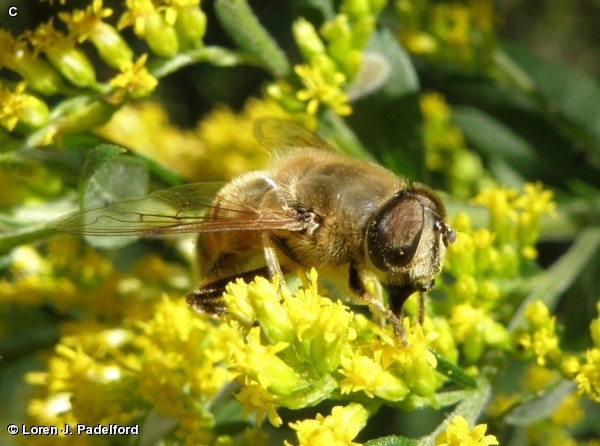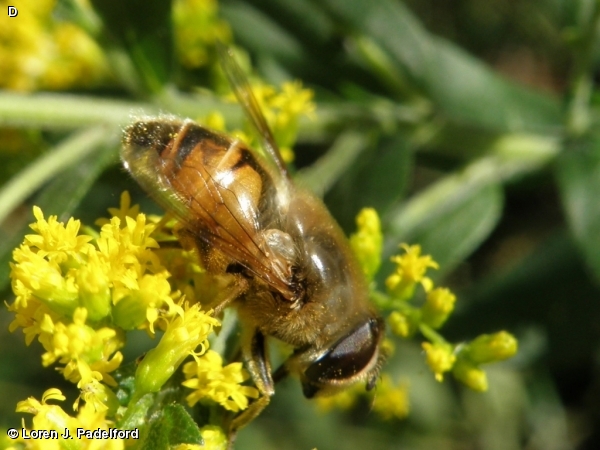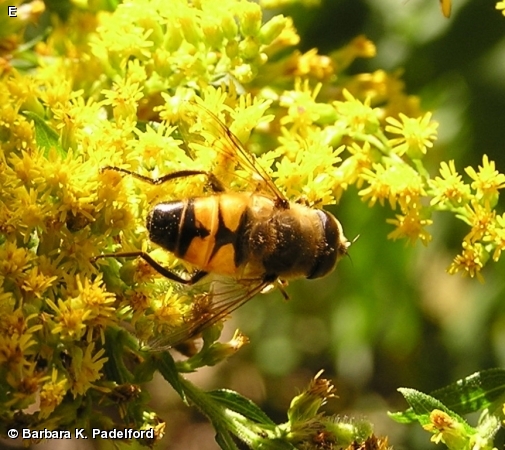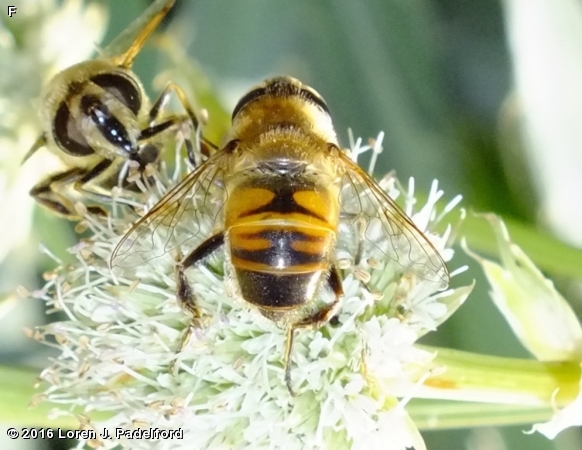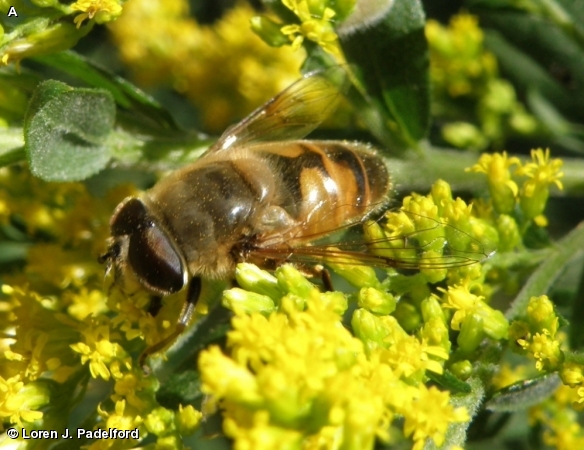
This large syrphid fly is approximatley 5/8 inch (15 mm) in length and is a honey bee imitator. It has very large dark brown eyes, touching on top in the male and separated on the female. There are two vertical bands of hairs on the eyes. The thorax is a plain brown color with the sides being covered with thick light-colored hairs. The abdomen is orange with black designs. The last two segments are black with light-colored hairs. The wings are clear with brown veins radiating out from the leading edge.
The Drone Fly is most commonly seen in fall on late-blooming flowers such as Goldenrod.
The larva of the Drone Fly feeds on decaying organic material in stagnant water in small ponds and ditches. It breathes through a long, thin tube that extends from its rear end to the surface of the water, which gives it the common name of ‘rat-tailed maggot’. This fly was introduced into North America (from Europe) prior to 1874.
Disclaimer: The content of NatureSearch is provided by dedicated volunteer Naturalists of Fontenelle Forest who strive to provide the most accurate information available. Contributors of the images retain their copyrights. The point of contact for this page is: Loren Padelford.

